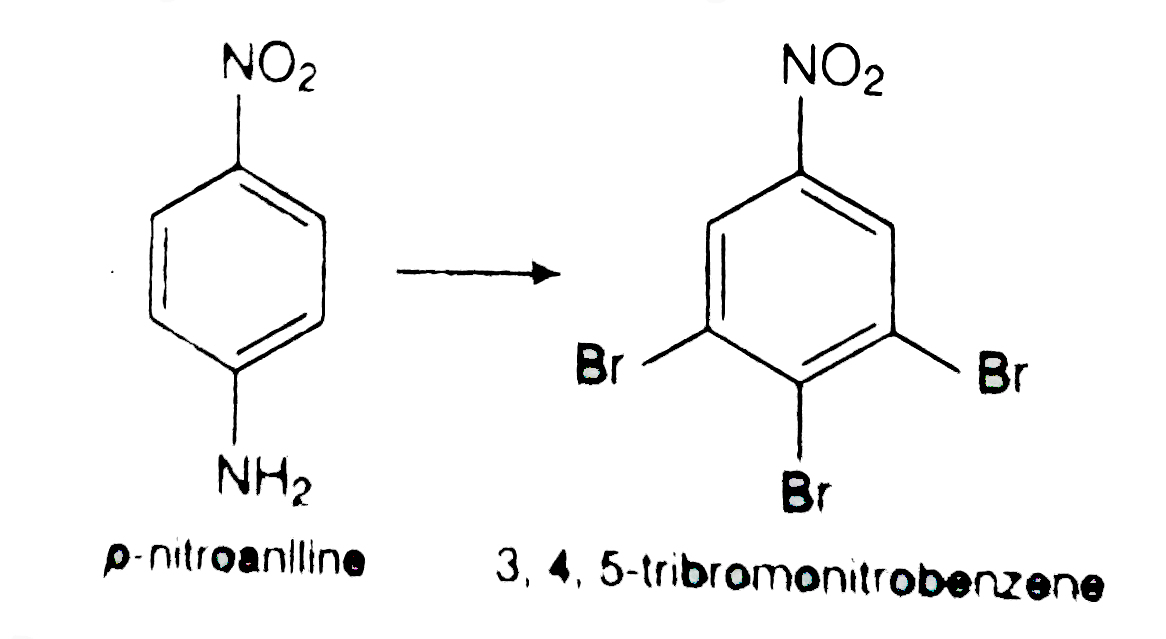How will you carry out the following conversions :
Acetone to ter-butyl alcohol
To convert acetone to tert-butyl alcohol, we can follow these steps:
Step 1: Understand the Reactants
Acetone (CH₃COCH₃) is a ketone, and we want to convert it to tert-butyl alcohol (C(CH₃)₃OH), which is a tertiary alcohol.
Step 2: Use of Grignard Reagent
We will use a Grignard reagent for this conversion. The Grignard reagent we will use is methylmagnesium bromide (CH₃MgBr). Grignard reagents are organomagnesium compounds that act as strong nucleophiles.
Step 3: Nucleophilic Attack
The nucleophilic carbon in the Grignard reagent (CH₃⁻) will attack the electrophilic carbon of the carbonyl group (C=O) in acetone. This results in the formation of a tetrahedral intermediate:
- The carbonyl oxygen will gain a negative charge, resulting in an alkoxide intermediate (CH₃C(OH)(CH₃)CH₃).
Step 4: Protonation
Next, we will add water (H₂O) to the reaction mixture. The alkoxide intermediate will undergo protonation when it reacts with water, converting the alkoxide into an alcohol:
- The negative charge on the oxygen will attract a proton (H⁺) from water, forming tert-butyl alcohol (C(CH₃)₃OH).
Step 5: Final Product
The final product of this reaction is tert-butyl alcohol, which is a tertiary alcohol due to the presence of three alkyl groups attached to the carbon bearing the hydroxyl (-OH) group.
Summary of the Reaction
The overall reaction can be summarized as follows:
1. Acetone + CH₃MgBr → Tetrahedral intermediate (alkoxide)
2. Tetrahedral intermediate + H₂O → tert-Butyl alcohol
Final Answer
The conversion of acetone to tert-butyl alcohol can be achieved by reacting acetone with methylmagnesium bromide (Grignard reagent) followed by protonation with water.
---
Acetone (CH₃COCH₃) is a ketone, and we want to convert it to tert-butyl alcohol (C(CH₃)₃OH), which is a tertiary alcohol.
We will use a Grignard reagent for this conversion. The Grignard reagent we will use is methylmagnesium bromide (CH₃MgBr). Grignard reagents are organomagnesium compounds that act as strong nucleophiles.
The nucleophilic carbon in the Grignard reagent (CH₃⁻) will attack the electrophilic carbon of the carbonyl group (C=O) in acetone. This results in the formation of a tetrahedral intermediate:
Next, we will add water (H₂O) to the reaction mixture. The alkoxide intermediate will undergo protonation when it reacts with water, converting the alkoxide into an alcohol:
The final product of this reaction is tert-butyl alcohol, which is a tertiary alcohol due to the presence of three alkyl groups attached to the carbon bearing the hydroxyl (-OH) group.
The overall reaction can be summarized as follows:
2. Tetrahedral intermediate + H₂O → tert-Butyl alcohol
The conversion of acetone to tert-butyl alcohol can be achieved by reacting acetone with methylmagnesium bromide (Grignard reagent) followed by protonation with water.
Topper's Solved these Questions
- ALDEHYDES, KETONES AND CARBOXYLIC ACIDSBOOK - ICSECHAPTER - ALDEHYDES, KETONES AND CARBOXYLIC ACIDSEXERCISE - ISC EXAMINATION QUESTIONS (PART-I OBJECTIVE QUESTIONS) (FILL IN THE BLANKS)
27 Videos
- ALDEHYDES, KETONES AND CARBOXYLIC ACIDSBOOK - ICSECHAPTER - ALDEHYDES, KETONES AND CARBOXYLIC ACIDSEXERCISE - ISC EXAMINATION QUESTIONS (PART-I OBJECTIVE QUESTIONS) (MULTIPLE CHOICE QUESTION)
24 Videos
- ALDEHYDES, KETONES AND CARBOXYLIC ACIDSBOOK - ICSECHAPTER - ALDEHYDES, KETONES AND CARBOXYLIC ACIDSEXERCISE - EXERCISE (PART-II DESCRIPTIVE QUESTIONS) (VERY SHORT QUESTIONS)
282 Videos
- ALCOHOLS, PHENOLS AND ETHERS BOOK - ICSECHAPTER - ALCOHOLS, PHENOLS AND ETHERS EXERCISE - ISC EXAMINATION QUESTIONS
25 Videos
- APPENDIX II ( TYPICAL CONVERSIONS)BOOK - ICSECHAPTER - APPENDIX II ( TYPICAL CONVERSIONS)EXERCISE - AROMATIC CONVERSIONS
98 Videos
Similar Questions
How will you bring out the following conversion?

View SolutionConversion of Acetone to ter. butyl alcohol
View SolutionHow will you bring about the following conversions ?

View SolutionHow will you bring out the following conversions ?
Ethene to ethyne
View SolutionHow will you bring out the following conversions ?
Ethane to ethyne
View SolutionHow will you bring out the following conversions ?
Ethyne to ethane
View SolutionHow will you carry out the following conversions :
Acetaldehyde to lactic acid.
View SolutionHow will you bring out the following conversions ?
Ethyne to methane
View SolutionHow will you carry out the following conversions :
An amine to ethyl isocyanide ?
View SolutionHow will you bring about the following conversion :
(i) Acetone to phorone
View Solution
